5-Minute Homemade Coriander Powder (Ground Coriander)
Learn how to make, use, and store Coriander Powder (or Ground Coriander) using Coriander Seeds. This post also shares many insightful tips about selecting, toasting, substituting, and so much more!
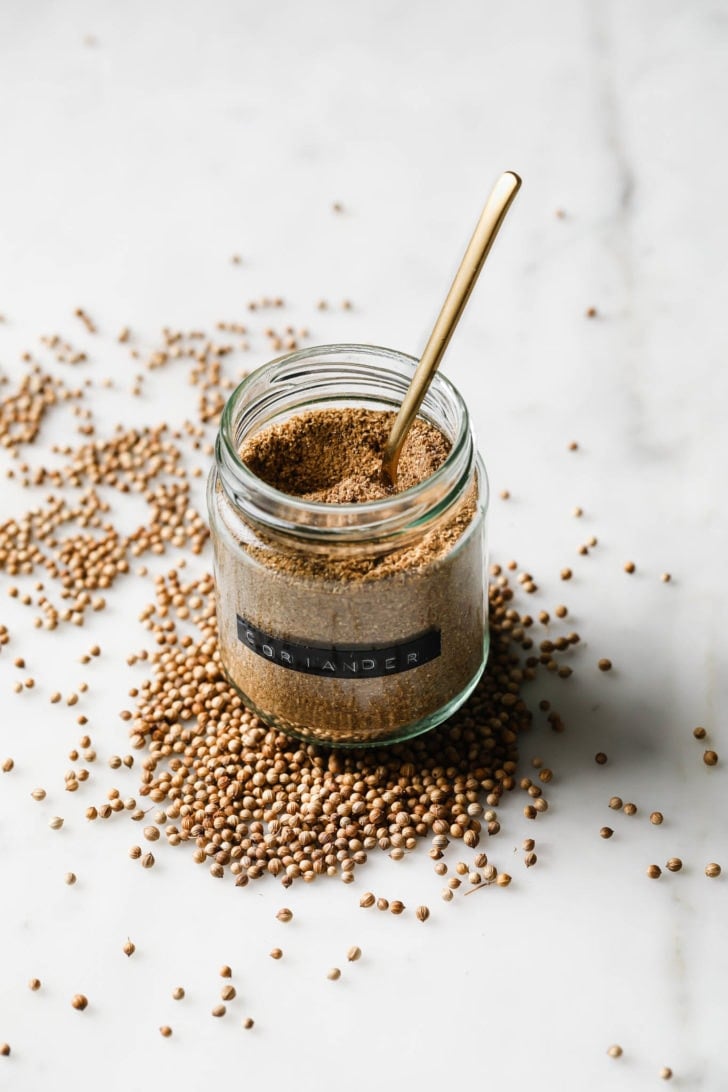
Want to save this post?
Enter your email below and get it sent straight to your inbox. Plus, get recipes & tips every week!
Sometimes, a friend or family member will say my recipes taste better, more savory, when I make them versus when they make the same thing. Though they mean it as a compliment, it makes me feel like I’m not doing my job well enough! 😅
Here’s one of my theories on why this could be (besides that I’m a terrible recipe developer):
I use fresh homemade ground spices like coriander powder, and that probably elevates the same recipe.
I’m not saying store-bought coriander powder won’t taste great. But grinding your own coriander will add freshness and vibrance to any dish. And it’s so easy to do that once you try it, it’ll feel impossible to buy store-bought.
Here’s everything you need to know about making, using, and storing coriander powder.
If you want to try your hand at making spice blends, try this homemade garam masala, chaat masala, or coriander sister spice, ground cumin.
Key Takeaways
- Selecting quality coriander seeds
- Why you don’t always have to toast coriander seeds (+ when you should)
- Whether store-bought coriander powder is toasted or not
- How to toast coriander seeds
- How to make coriander powder (aka ground coriander)
- Storage Tips
- Using coriander powder and seeds interchangeably
- Substitutes for coriander powder
- 5-Minute Homemade Coriander Powder (Ground Coriander)
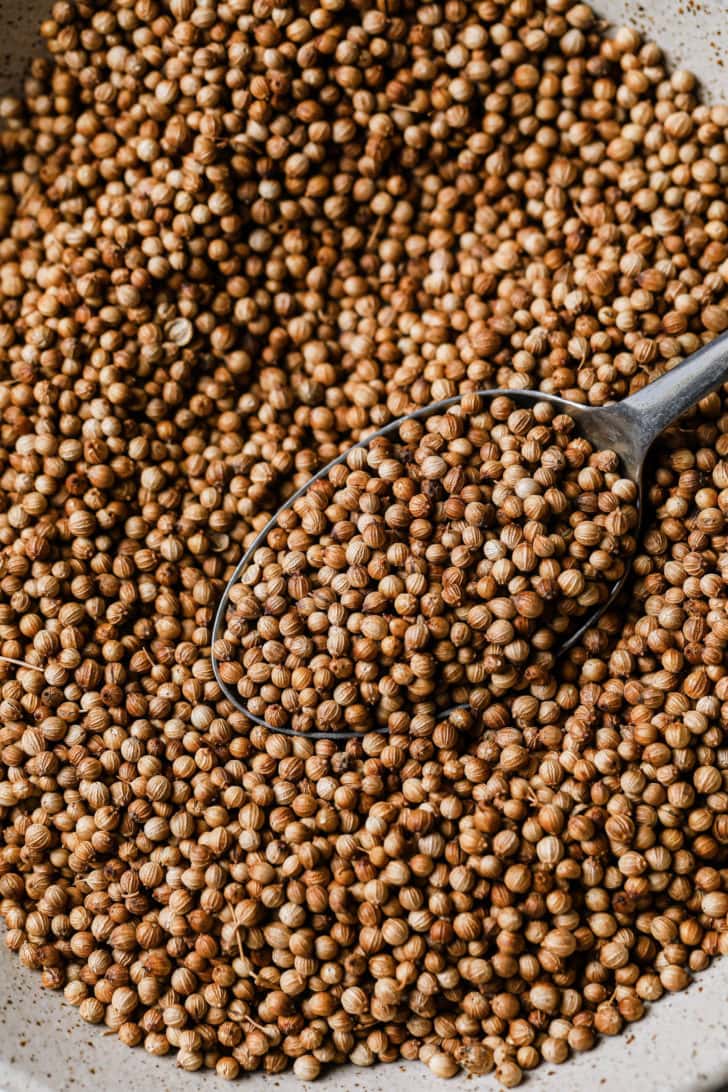
What is Coriander?
Coriander is a plant (Coriandrum Sativum) of the parsley family. Coriander leaves, seeds, stalks and even roots are all edible.
The coriander plant makes green seeds (or fruit) that mature and dry into our beloved whole coriander seeds (called sabut dhaniya in Hindi and Urdu).
Grind these seeds and you’ve got coriander powder (sookha dhaniya or dhaniya powder in Hindi and Urdu).
Is Coriander the Same as Cilantro?
In North America, coriander refers to the seeds/spice, while the herb itself is called ‘cilantro’. In other parts of the world, people often call both the seeds and plant coriander.
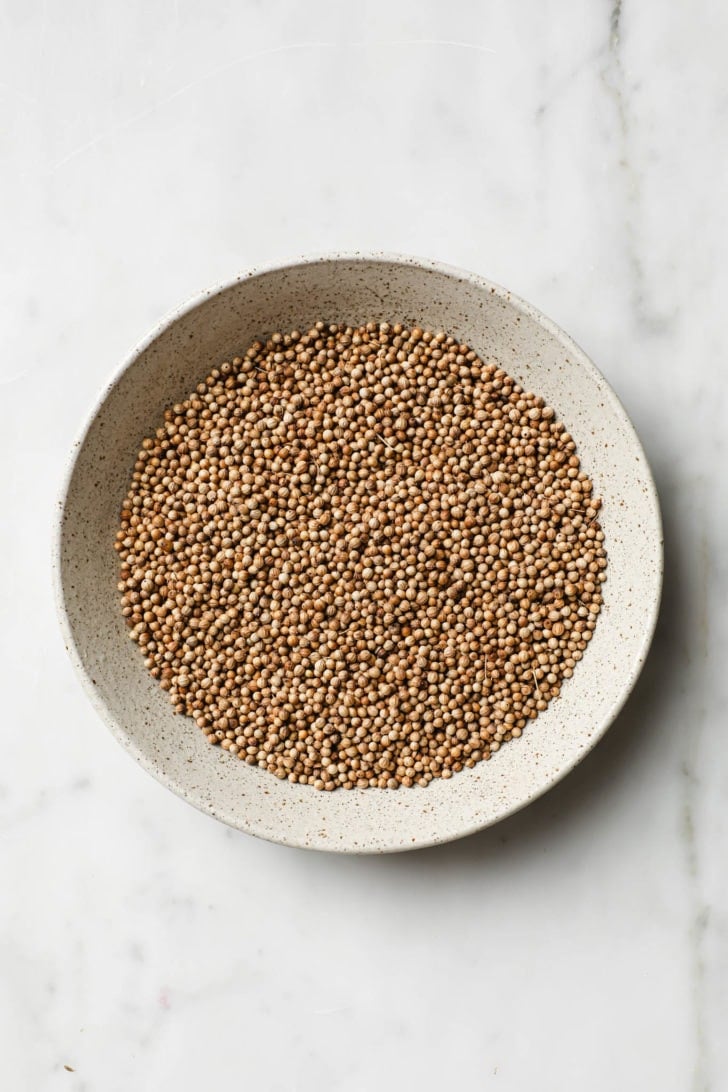
Origins and History
Though there’s so much information about coriander, its origins remain unclear. The word ‘coriander’ may have come from the Greek word “koriannon“, a combination of koris (a bug) and annon (a fragrant anise). References to coriander started during the egyption period, and it made its way to India around 200 BCE.
Today, coriander/cilantro is cultivated all around the world. It’s used in many cuisines such as South Asian, Mediterranean, Latin, Mexican, and Asian.
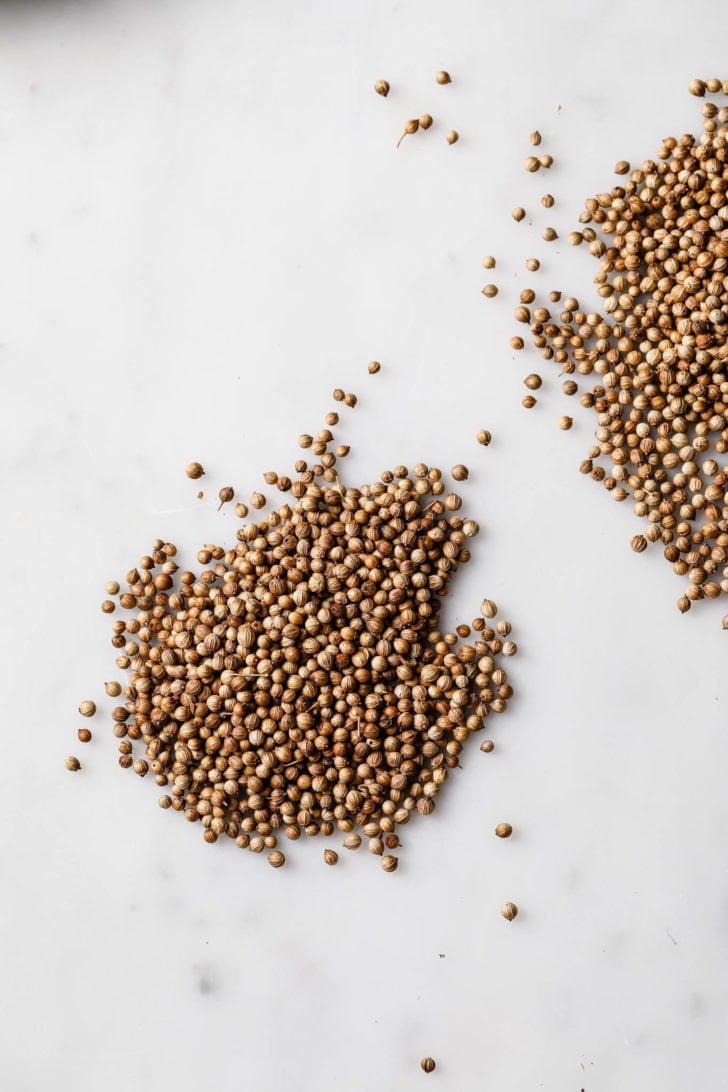
Coriander texture and taste
Coriander seeds are tiny, round, and mild in taste. Apart from adding subtle flavor, they add texture to traditional South Asian dishes. Coriander seeds are also great to flavor rice for pulaos.
Coriander powder is warm, earthy, and flavorful without being hot. It’s also slightly floral, with citrusy undertones. In South Asian cooking, coriander is often used alongside cumin powder.
How to Select Coriander Seeds
One way to tell the quality of packaged coriander seeds is by the color. If the seeds are bright with an amber hue, it indicates freshness and quality. If the seed seems darker, dried out, or withered, it may be lacking in taste and aroma.
If you’re able to smell it, the scent also indicates freshness. If it smells fresh, strong, and sweet, that indicates quality seeds.
Tip: If you get coriander seeds that have a pale-green hue or don’t seem well-dried, you can always toast them lightly before grinding.
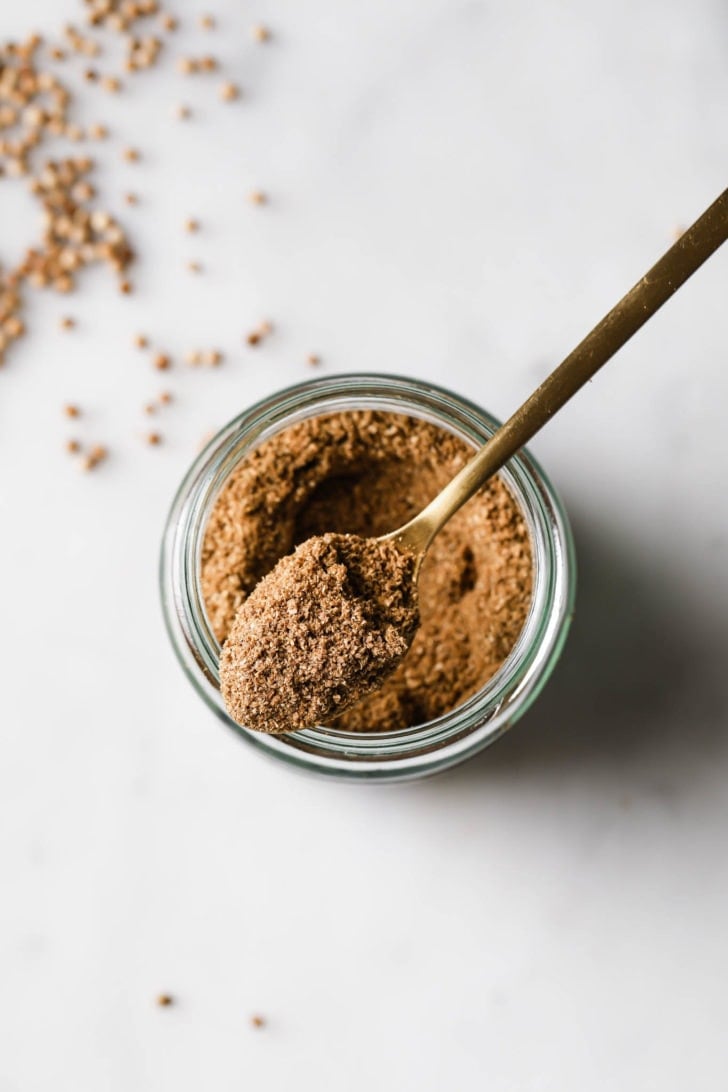
Should You Toast Coriander Seeds for Coriander Powder?
Toasting, or dry roasting, dries out any residual moisture from the coriander seeds while bringing out the natural oils. Whether you should toast coriander or not depends on how intense you’d like the flavor.
- Powder from untoasted seeds is fresher and lighter in flavor, with herbal and earthy tones.
- Powder from toasted seeds loses the citrusy vibes and takes on an aromatic, stronger, nutty taste.
As much as toasted spices are touted as superior to their untoasted counterparts, I don’t think it’s absolutely necessary to toast.
Here’s why: In most curry recipes, you’ll almost always add coriander powder early on in the cooking process. That means it’ll likely get cooked in oil while you’re making the dish. Using well-toasted coriander powder can lead to stronger, sometimes even bitter flavor. That’s probably not what the recipe developer (or at least this recipe developer) intended. (That said, if you’re only lightly toasting it, it’ll be just fine.)
When it’s Best to Toast Coriander Seeds
Some recipes need more mature, deeper flavor from the coriander seeds. Some examples include:
- Chaats
- Raitas
- Spice Blends
- Kababs (especially Chapli Kabab & Seekh Kabab)
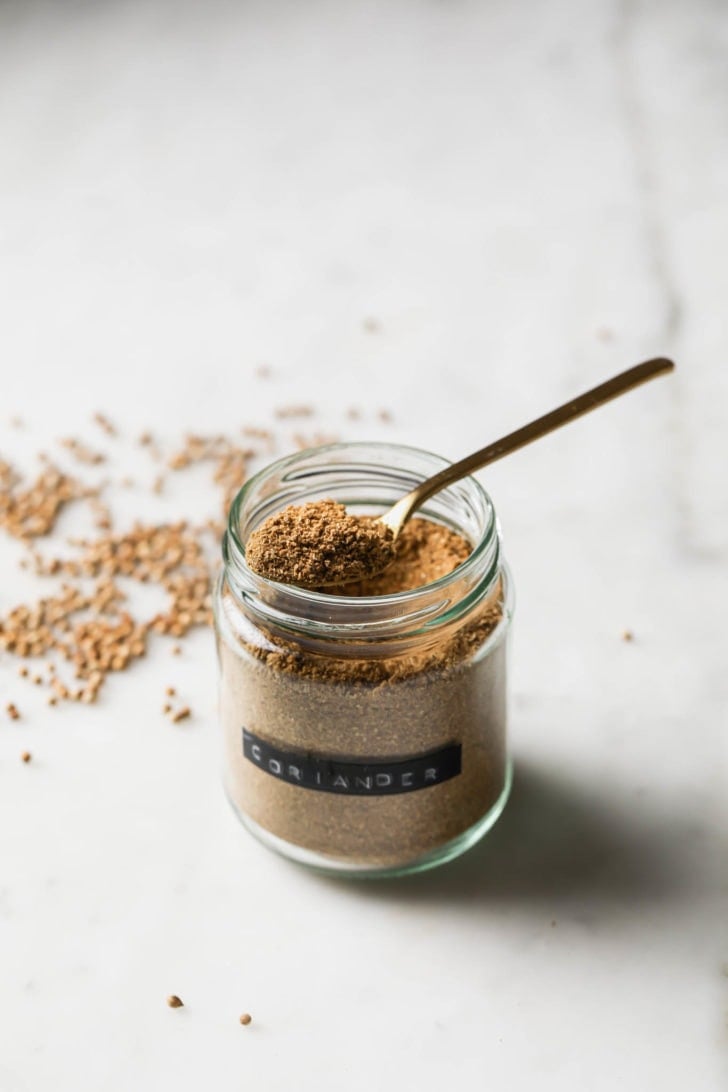
How to Tell if Store-Bought Coriander Powder is Toasted
Generally, most grocery stores sell untoasted coriander powder. A quick way to tell:
- If it’s lighter, earthy brown, it’s likely made of untoasted seeds (here’s McCormick’s Simple Ground Coriander.)
- If it’s a darker shade of brown, that means it’s likely been toasted (see McCormick’s Roasted Ground Version).
How to Toast Coriander Seeds
Here’s how to toast the seeds to make your own ground coriander recipe:
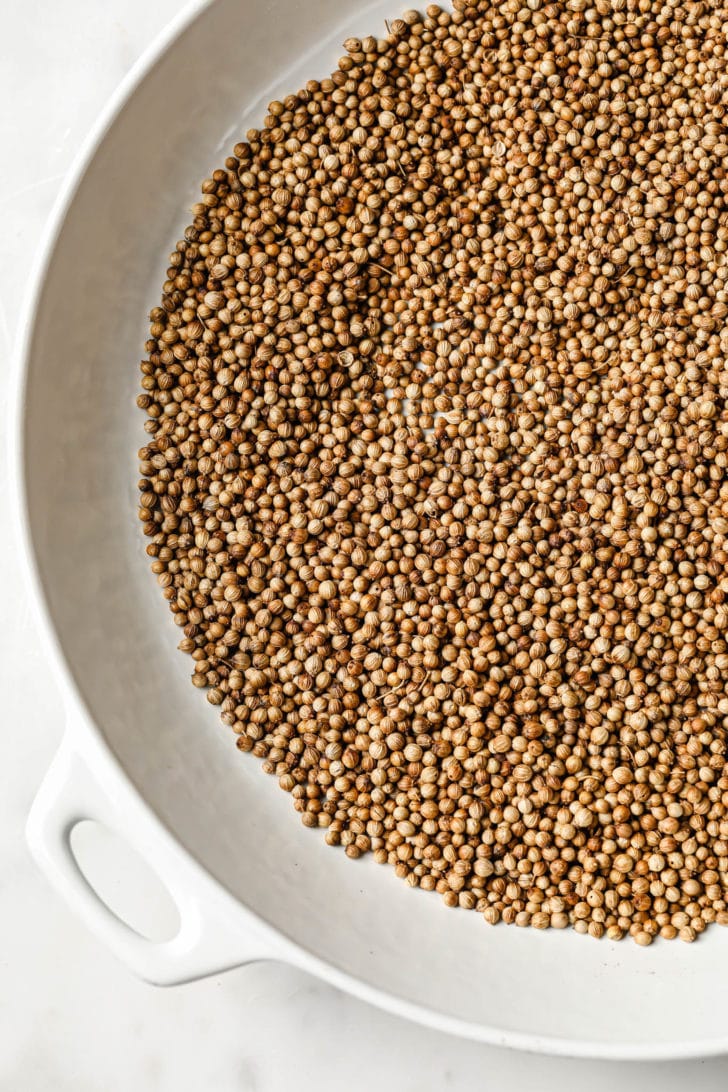
- Heat a skillet or heavy-bottomed pan over medium or medium-low heat. Once hot, add the coriander seeds. Toast, stirring and shaking the skillet often, for 2-3 minutes. Exact toasting time depends on the moisture content of the seeds and how many you’re toasting.
- The seeds will deepen in color, become highly aromatic, and maybe even start popping/crackling. Remove from heat, allow to cool completely. (Grinding while hot can introduce moisture – not good for storing.)
Note: Be careful not to toast too much. If you overdo it, you’ll get dark brown seeds that’ll alter the taste and color of the powder.
How to Make Homemade Coriander Powder
It really is as simple as it seems:
- Place the raw or toasted coriander seeds in a spice grinder.
- Grind for about 1 minute, stopping and shaking the grinder as needed to help evenly distribute the spices. The seeds will grind to a fine, textured powder.
- Transfer the ground coriander (use a spice funnel to make this easier) to a spice jar or a small airtight container.
- Store for up to 6 months.
Best Uses of Coriander
Coriander powder is incredibly versatile and you can use it in countless savory dishes:
- Curry recipes to create balance.
- Rubs, marinades, and roasts to add flavor and texture.
- Soups and stews to add depth.
- Roasted vegetables to bring out their earthy flavor.
Storage Tips
Store in an airtight spice jar or container in a cool, dry spot for up to 6 months. No need to refrigerate since you don’t want to introduce moisture and alter the taste.
Tip for storing a large batch: Keep a small amount in your usual spice container, and store the larger quantity in a separate airtight container. You won’t be exposing it to air as much, therefore increasing its shelf life.
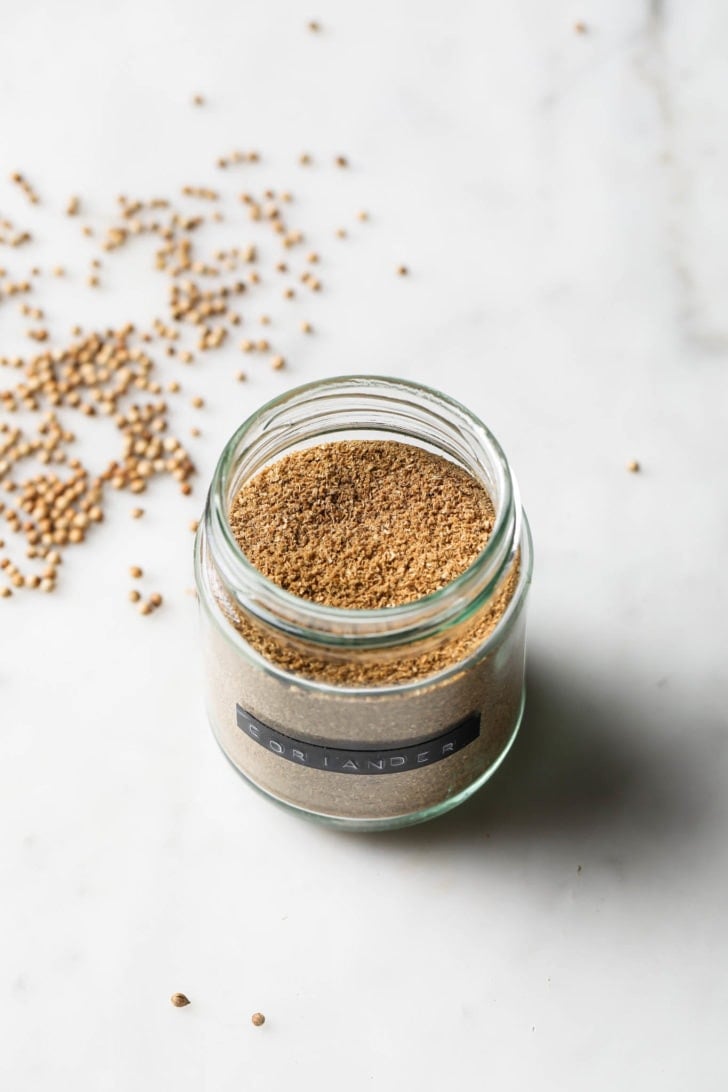
Can You Use Coriander Seeds and Powder Interchangeably?
You can easily use seeds to make powder, but substituting powder for seeds is a bit more trickier.
If a recipe calls for ground coriander powder and you have seeds:
- Grab a spice grinder, mortar and pestle, or even a zip top bag and meat mallet/heavy skillet and crush to a powder.
If a recipe calls for whole or crushed coriander seeds and you only have powder:
- Use slightly less powder (around ¾ teaspoon of ground coriander for 1 teaspoon whole seeds) in place of the seeds. Though it won’t get the texture, you’ll still get the flavor.
- Note: Sometimes a recipe will call for the seeds just for texture (ex. Pickles/Achar or Chapli Kabab). In this case, use a much smaller quantity of powder.
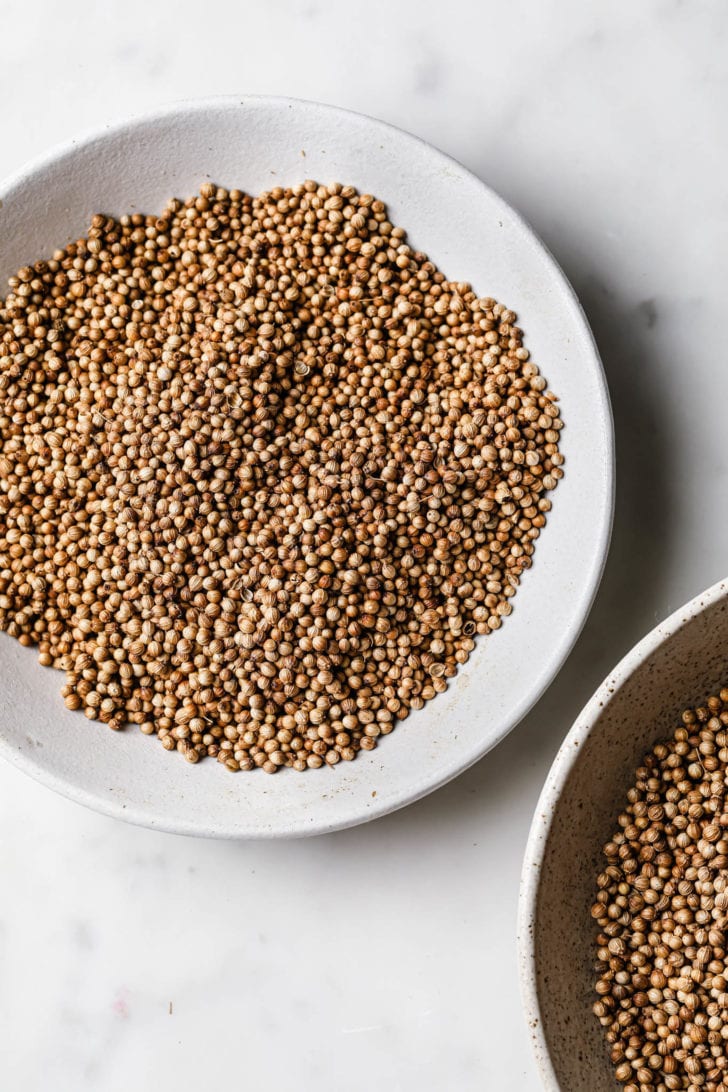
Substitutes for Coriander Powder
If a recipe calls for coriander powder and you’re out of it, try one of these:
- curry powder
- garam masala
- a combination 3/4 part cumin powder and 1/4 tsp ground fennel seeds and a pinch of caraway seeds if you have them (they’re similar in scent!)
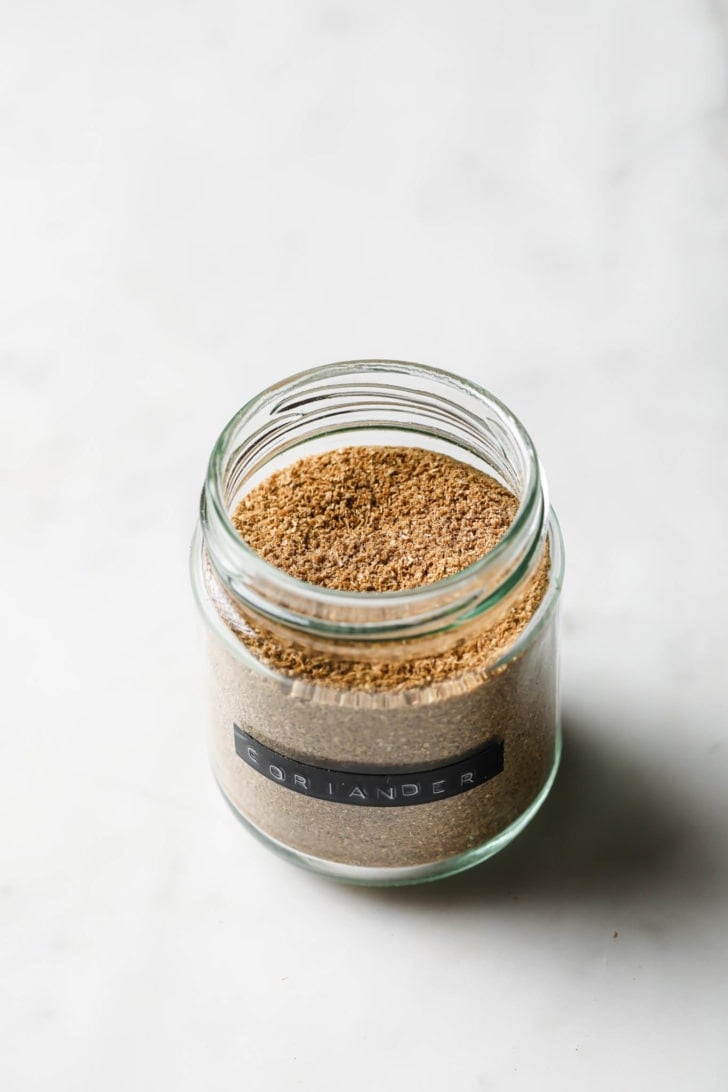
Tried this recipe? If you have a minute, please consider leaving a comment telling me how it was! If you have a photo of your dish, please feel free to upload it and share with others. If you’re on Instagram, please tag me so I can see your creations. I truly love hearing from you. Thank you!
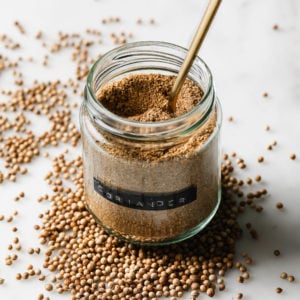
5-Minute Homemade Coriander Powder (Ground Coriander)
Ingredients
- ¾ cup (~50-55g) coriander seeds, (See Note 1)
Equipment
- Spice funnel (optional, but nice to have)
Instructions
- Place the raw coriander seeds in a spice grinder. Grind for about 1 minute, stopping and shaking the grinder as needed to help evenly distribute the spices. The seeds will grind to a fine, textured powder.
- Transfer the ground coriander (use a spice funnel to make this easier) to a spice jar or a small airtight container. Store for up to 6 months. (See Storage Tips.)


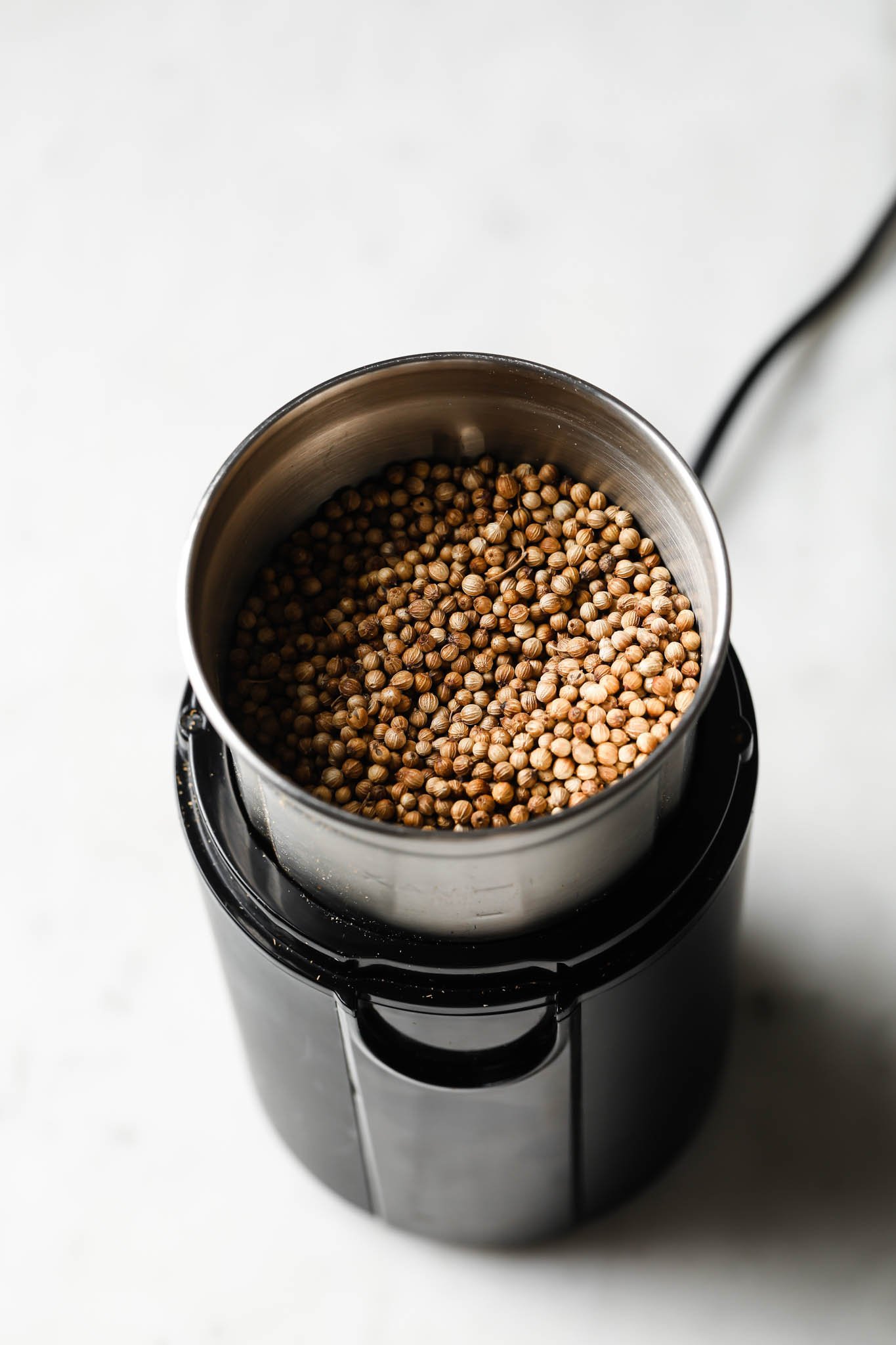
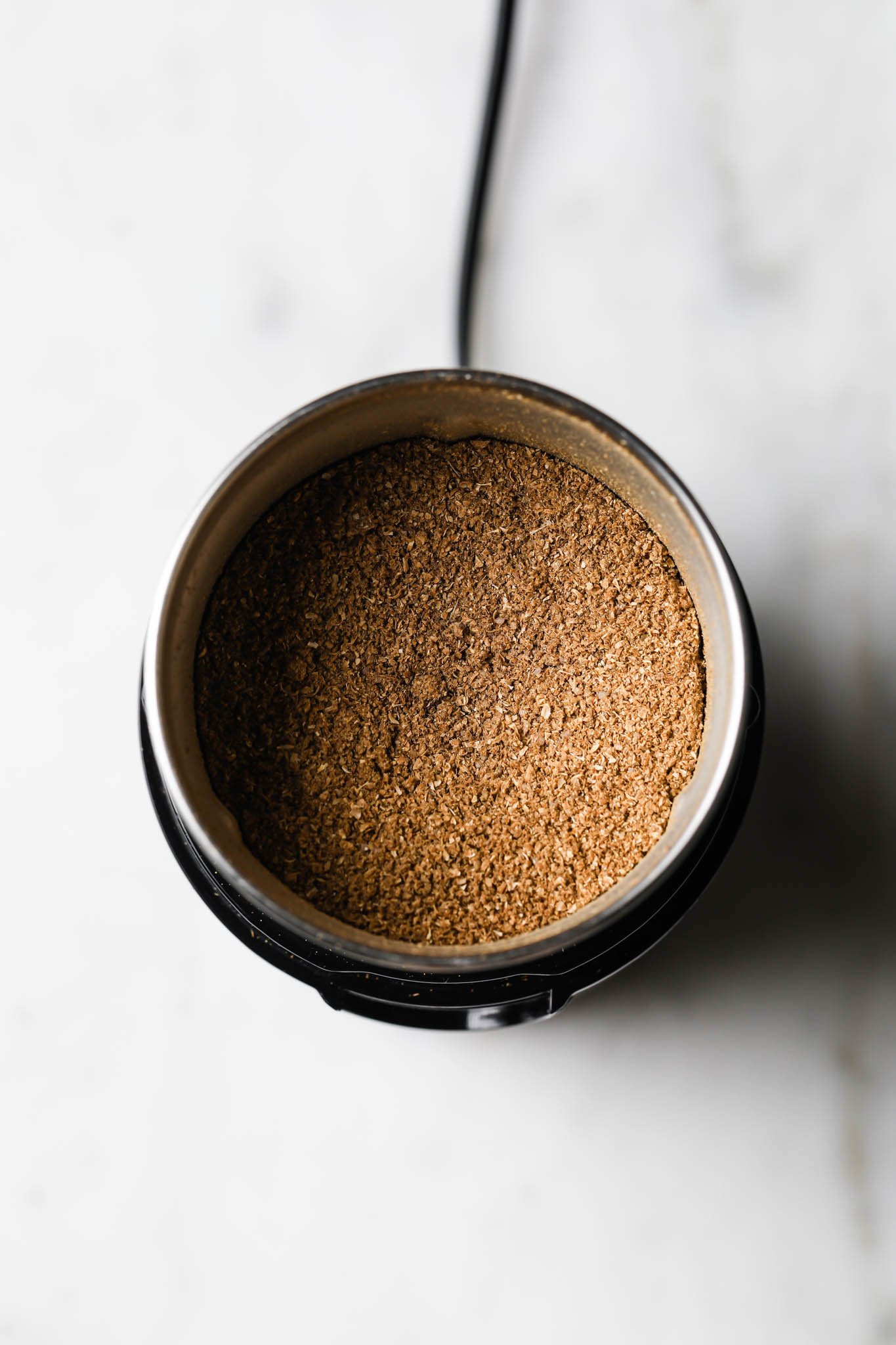
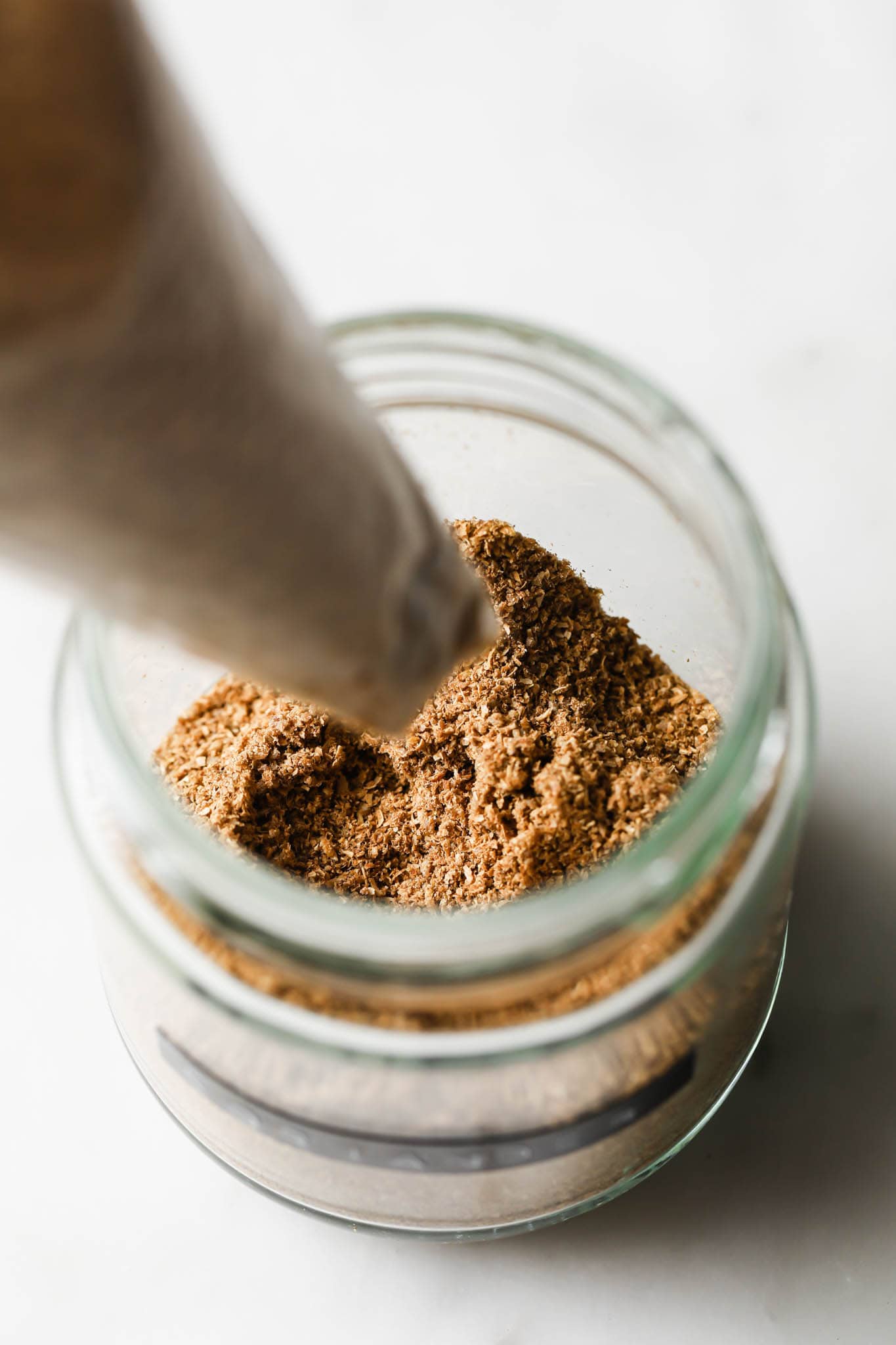
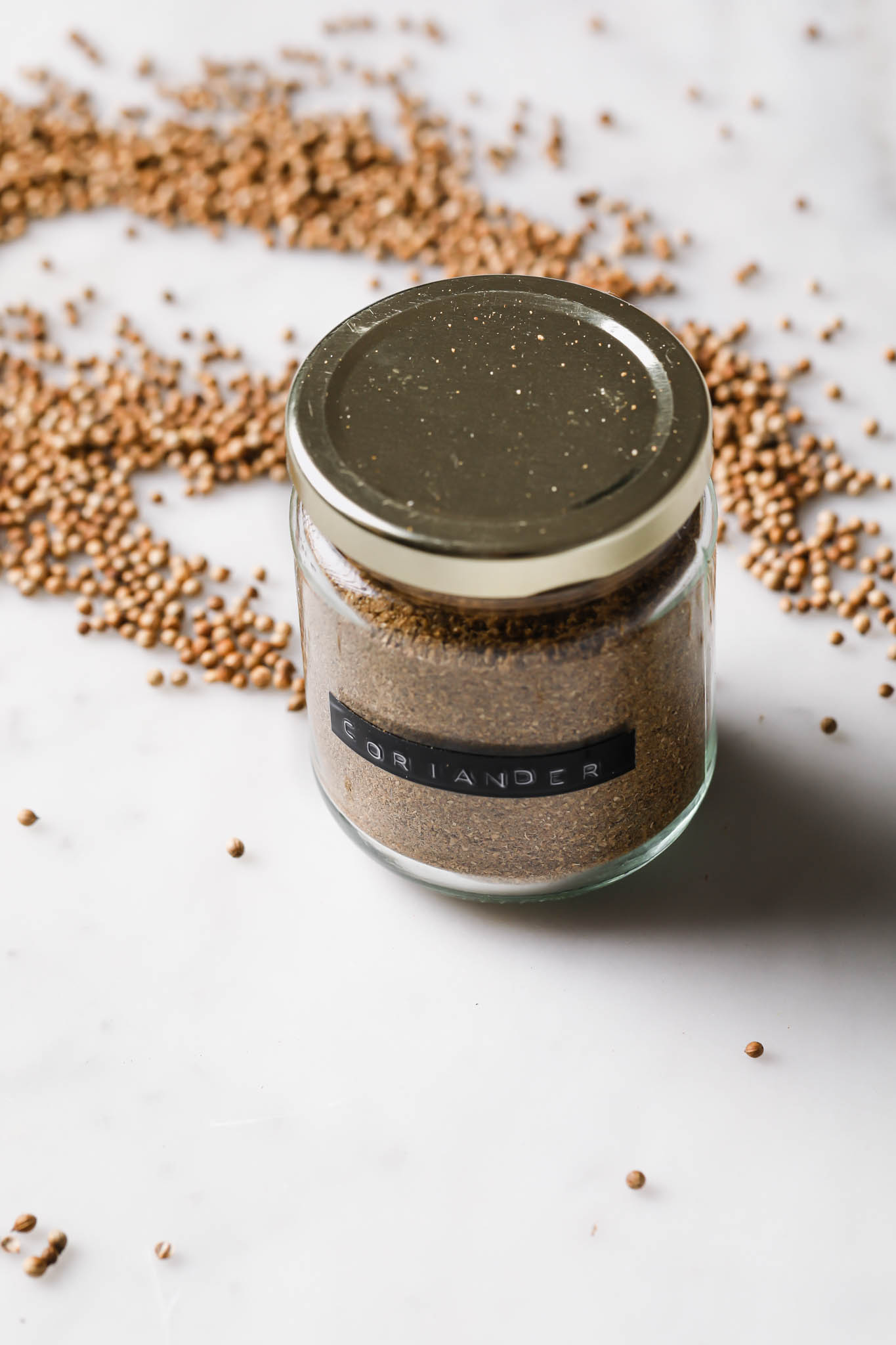
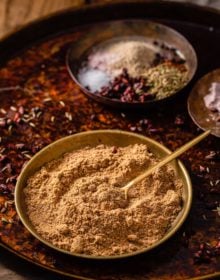
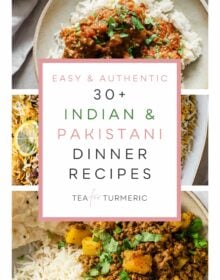
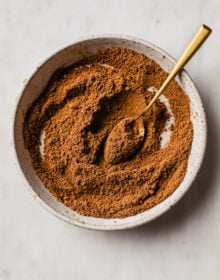
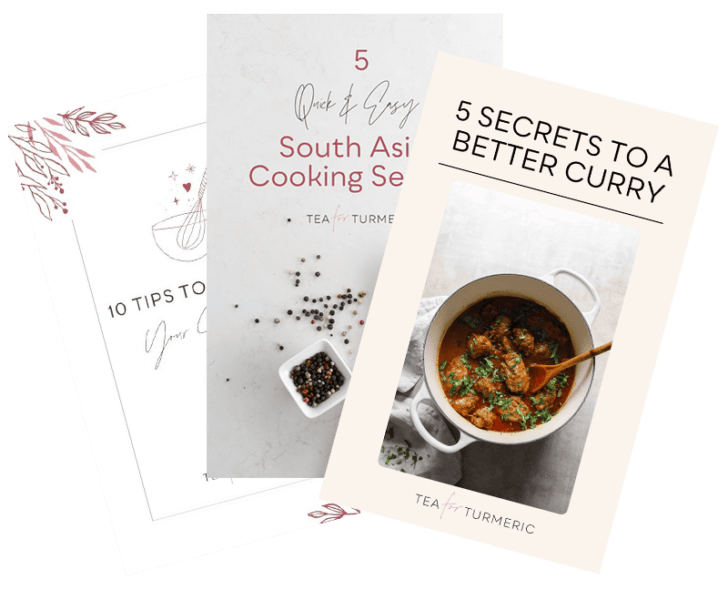
4 Comments on “5-Minute Homemade Coriander Powder (Ground Coriander)”
Thank you so much for this detailed, well-written information on Coriander seeds. What do you think about zeera powder? Do you grind hour own? Toast or not?
I will definitely try grinding my own coriander powder.
So glad you found it helpful. Yes, I grind cumin one as well without toasting! Hoping to get a post on that in a month or so! So much Ramadan content planned for the coming weeks iA.
Very helpful information – thank you!
Thanks so much, Elle!